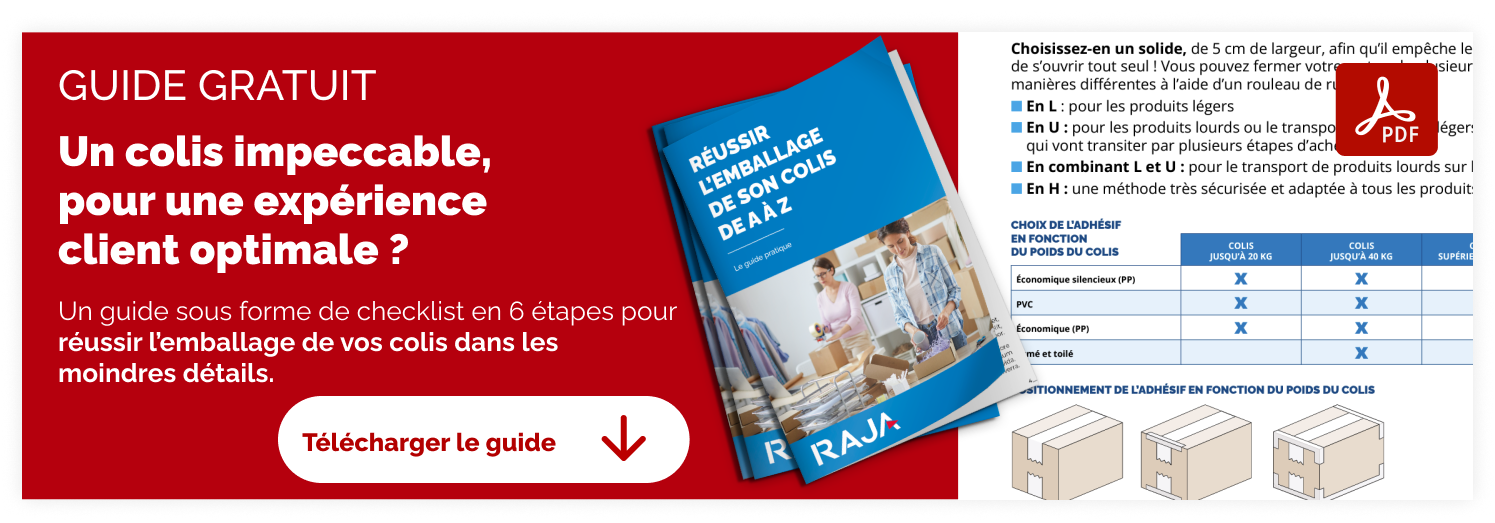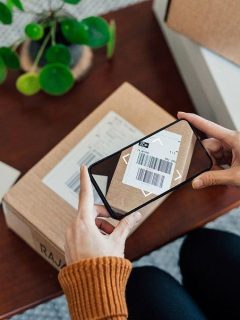In the luxury sector, every detail is important for the user experience and your brand image. This is, of course, the case with packaging. It both protects and enhances your luxury products, such as a bottle of wine or a bottle of perfume. Find out why it’s so important and what the latest trends and innovations are in the rest of this article.
How does your luxury packaging help influence the customer experience?
“You don’t get two chances to make a good first impression”.
This quote attributed to Coco Chanel perfectly illustrates the importance of luxury bags, packaging and other boxes.
They represent one of your customers’ very first experiences with your brand. As such,they must be ofimpeccable quality, while conveying your image and values.
In the current context ,three factors in particular impact on the customer experience:
1 – The quality of the materials used in your luxury packaging
Packaging appeals to your customers’ senses. They will see it, touch it and even smell it. It is therefore essential that the materials used in its design are of the highest possible quality. All this will improve the perceived value of your product.
Choose high-quality raw materials such as rigid cardboard, tissue paper or textured ribbon. Also think about the user experience by making it easier to handle, for example with a luxury rectangular box with a magnetic flap lid. Of course, the packaging must be adapted to your product and its constraints, for example for packaging bottles.
Here are a few examples of luxury packaging using quality materials:
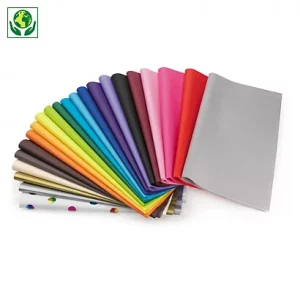 |
Silk paper coloured to embellish your packages and protect the most fragile and delicate surfaces. |
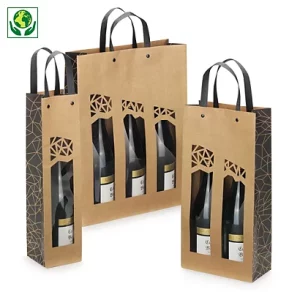 |
Kraft window bags to protect and enhance your bottles of wine and spirits. |
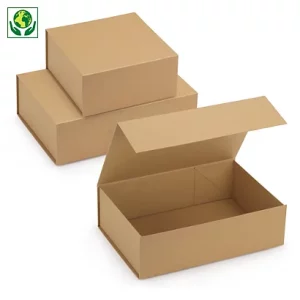 |
Rigid cardboard boxes with magnetic closure for long-lasting packaging. |
2 – Measuring the eco-responsibility of your luxury packaging
Consumers are increasingly concerned about environmental issues. More and more of your potential customers are going to make their purchase conditional on your ability to limit the ecological and social impact of your products.
Choose eco-designed packaging or reusable to show your commitment to the issue and communicate shared values with your consumers.
3 – Customisation and durability of your packaging
In the luxury sector more than any other, consumers expect exceptional quality in every aspect of the product, including its packaging. This is especially true when it comes to purchases for loved ones.
The company that produces your luxury packaging must offer a made-to-measure product that allows you to personalise it. Whether to mark the packaging with your colours, logo or other elements of your brand identity. But also to authorise the inscription of a name or message on a gift box, for example.
What are the latest trends and innovations in luxury packaging?
Whether you sell your luxury products in a boutique or via e-commerceyou’ve already realised the benefits of investing in top-quality packaging. Let’ s take a look atthe latest trends to make sure you hit the bull’s eye!
Cardboard and paper remain the materials of choice
As we saw above, global environmental awareness means that you need torethink the way your products are packaged. The luxury sector, which has long been singled out for criticism, is making the transition to greatereco-responsibility.
Gone are the days of plastic and other materials that are difficult to recycle, in favour ofeco-packaging. And on this point, it’s clearly cardboard and paper that come out on top and are topof the class.
What’s more, they offer a number of advantages, such as
- Often lower cost than other materials.
- Great flexibility to adapt to all types of products and requirements
- A wide range of customisation options (cut-outs, marking, etc.)
Rigid cardboard is particularly suitable for luxury boxes. For bags, kraft isresistant, recyclable and fashionable.
Discover inspiration for your future luxury kraft bags:
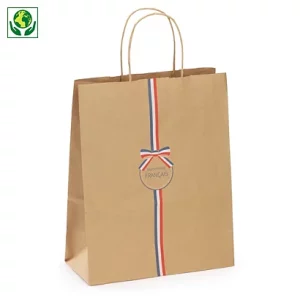 |
The “French savoir faire” kraft bag with twisted handles |
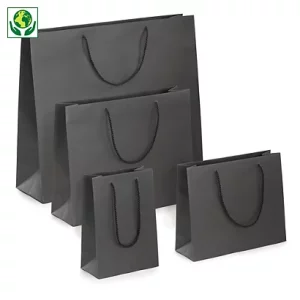 |
The luxury kraft bag with cotton handles |
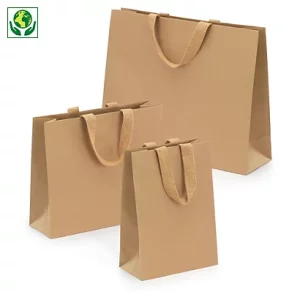 |
The natural luxury kraft bag with paper handles |
Luxury packaging must be Instagrammable
Social networks have made a major contribution to the democratisation of the luxury market. Luxury products are increasingly appearing on news feeds, particularly on Instagram and TikTok.
It is no longer just content creators and influencers with millions of followers who share their purchases with their community. All users are likely to become true ambassadors for your brand. Whether through photos or video, with the trend towards “unboxing” in particular, which consists of filming the opening of a product, often accompanied by reactions and opinions on the spot.
Take advantage of the behaviour of the new generation of shoppers with luxury packaging designed to enhance the unboxing experience:
- uniquewith visual elements that shoppers will want to take a photo or video of
- highlights your brand identity is easily recognisable
- clearly displays your social network accounts to encourage buyers to mention you when sharing
- is quick and easy to openhighlights your product directly
- limits over-packaging by adapting the dimensions of your packaging to its contents as closely as possible
- shows the care taken to protect the product
- highlights accessories or other items offered with the product with the product (sample, gift, pouch or case…)
Luxury packaging is becoming increasingly minimalist
Onceagain, this trend is linked to consumers’ high expectations in terms of eco-responsibility.
Today, it isno longer possible to design complex packaging combining different materials. A single-material packaging cardboard packaging will generally meet all your needs, given itsversatility. Rigid, it is ideal for your luxury boxes and cases, protecting the product while giving a feeling of quality. In its softer or honeycombed versions, it will be useful for holding products and accessories in place inside, while limiting the total weight of the packaging.
Consumers are also increasingly frustrated when they find thattheir luxury products are over-packaged. Adapt the dimensions of your packaging as closely as possible to those of your products. You’ll also reduce the amount ofcushioning you need. In all cases, replace plastic wrapping with recycled paper wrapping.
Minimalism and simplicity have always been codes associated with luxury. Examples include Hermès and Apple, with their orange cardboard boxes and white cardboard boxes, which are as uncluttered as possible, yet instantly recognisable.
This trend is no more and no less than an opportunity for luxury companies to return to their roots. From aneconomic point of view, they are also excellent ways ofreducing your production, storage and transport costs, with less expensive and less bulky packaging.
Vintage and retro are making a comeback
Nostalgia is making its way into luxury packaging, across all sectors and products.
Vintage packaging was all about simplicity of design and the use of raw materials such as kraft or cardboard. Vintage packaging conveys a certain image ofexpertise, quality and tradition. And just as well, it’s perfectly consistent with the points made above!
Here are a few examples of retro and vintage touches for your luxury packaging:
- A monochrome style, with a single dominant colour
- Rough, unadorned design
- Stylised fonts
- Twisted handles for bags
In conclusion, packaging is a crucial element to consider in the luxury market. Consumer expectations of packaging are changing rapidly. Companies in the sector therefore need to make the shift as quickly as possible to avoid repercussions for their brand image and to continue to show buyers that they are living with the times.












